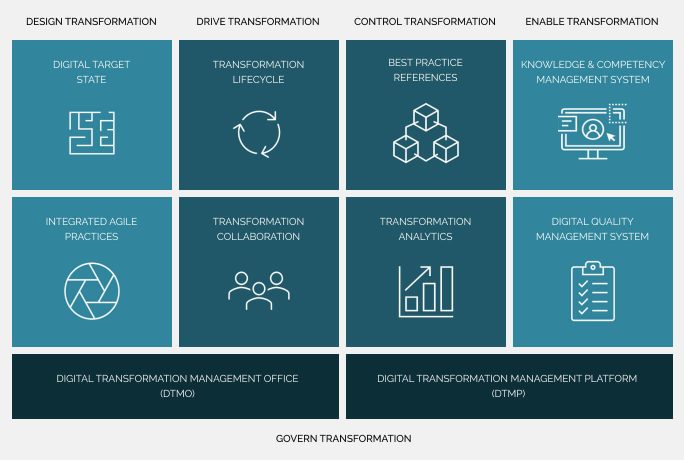The Framework for Digital Transformation

Learn More About
The Key Partnerships Building Block describes the network of suppliers and partners that make the business model work.
Questions to ask
- Who are our Key Partners?
- Who are our key suppliers?
- Which Key Resources are we acquiring from partners?
- Which Key Activities do partners perform for us?
More about Key Partnerships
Companies forge partnerships for many reasons, and partnerships are becoming a cornerstone of many business models. Companies create alliances to optimize their business models, reduce risk, or acquire resources. We can distinguish between four different types of partnerships, which are strategic alliances between non-competitors, coopetition: strategic partnerships between competitors, joint ventures to develop new businesses, and buyer-supplier relationships to assure reliable supplies.
Types of Key Partnerships
It can be useful to distinguish between three motivations for creating partnerships:
Optimization and economy of scale
The most basic form of partnership or buyer-supplier relationship is designed to optimize the allocation of resources and activities. It is illogical for a company to own all resources or perform every activity by itself. Optimization and economy of scale partnerships are usually formed to reduce costs, and often involve outsourcing or sharing infrastructure.
Reduction of risk and uncertaintyTypes of Key Partnerships
Partnerships can help reduce risk in a competitive environment characterized by uncertainty. It is not unusual for competitors to form a strategic alliance in one area while competing in another. Blu-ray, for example, is an optical disc format jointly developed by a group of the world’s leading consumer electronics, personal computer, and media manufacturers. The group cooperated to bring Blu-ray technology to market, yet individual members compete in selling their own Blu-ray products.
Acquisition of particular resources and activities
Few companies own all the resources or perform all the activities described by their business models. Rather, they extend their own capabilities by relying on other firms to furnish particular resources or perform certain activities. Such partnerships can be motivated by needs to acquire knowledge, licenses, or access to customers. A mobile phone manufacturer, for example, may license an operating system for its handsets rather than developing one in-house. An insurer may choose to rely on independent brokers to sell its policies rather than develop its own sales force.
WHY USE DIGITAL TRANSFORMATION MANGEMENT FRAMEWORK ?
Lorem ipsum dolor sit amet, consectetur adipiscing elit, sed do eiusmod tempor incididunt ut labore et dolore magna aliqua
Read More
Lorem ipsum dolor sit amet, consectetur adipiscing elit, sed do eiusmod tempor incididunt ut
Read More
Lorem ipsum dolor sit amet, consectetur adipiscing elit, sed do eiusmod tempor incididunt ut
Read More
Lorem ipsum dolor sit amet, consectetur adipiscing elit, sed do eiusmod tempor incididunt ut
Previous
Next
SEE IN ACTION
DTMF Explained
A 2 minute overview of the Business Model Canvas, a tool for visionaries, game changers, and challengers. This method from the bestselling management book Business Model Generation is applied in leading organizations and start-ups worldwide.

CONTACT US
Sign up for a free
digital assessment
Lorem ipsum dolor sit amet, consectetur adipiscing elit, sed do eiusmod tempor incididunt utorem ipsum dolor sit amet, consectetur adipiscing elit, sed do eiusmod tempor incididunt lorem ipsum dolor sit amet, consectetur adipiscing elit, sed do eiusmod tempor incididunt utorem ipsum dolor sit amet, consectetur adipiscing elit, sed do eiusmod tempor incididunt ut